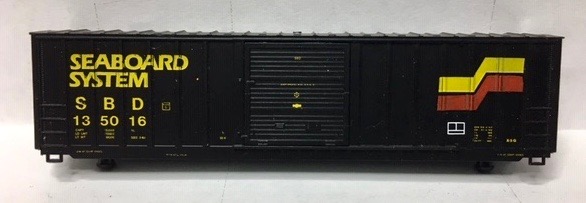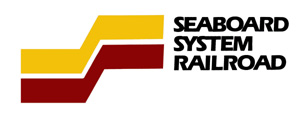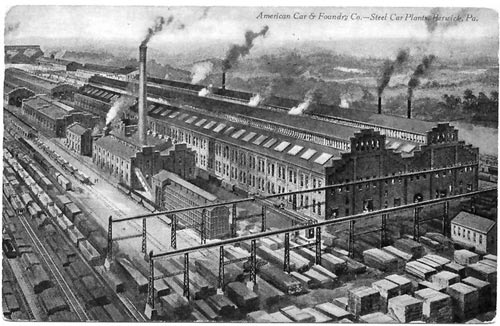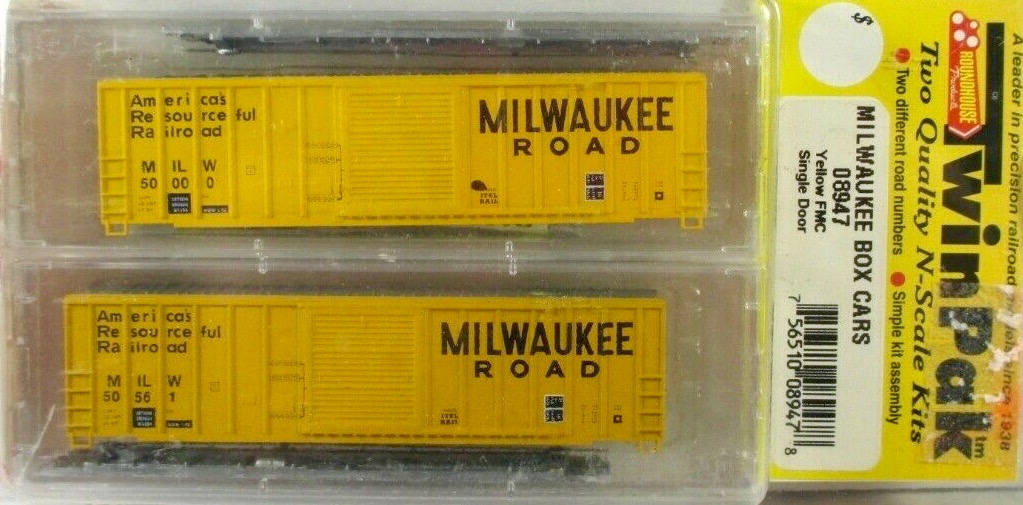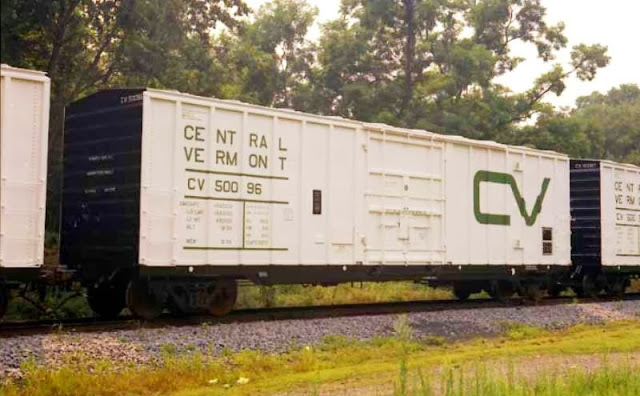Model Information: Boxcar, 50 Foot, Youngstown Single Sliding Door, Rib Side, Without Roofwalk, modeled after a prototype produced by BFF (Berwick Forge and Fabricating). MDC has released this model both in 'kit' and RTR (Read-to-Run) packaging. None of the features on the model actually match the Berwick prototype. Athearn acquired this tooling from MDC in 2004, and has since re-released it more than once. Athearn markets BFF models with both door styles (Pickens and Youngstown) as 'Berwick Boxcars'. The Athearn models feature magnetically operated couplers and are always RTR.
Prototype History: The US government came up with a scheme to create an artificial incentive for railroads to buy new boxcars. If a railroad increased its boxcar fleet it was allowed to charge other railroads (not the customer) more for their daily use. (That's Per Diem). As an example, if the Crab Orchard and Egyptian acquired a fleet of 500 boxcars (up from zero) , and got them loaded on the ICG, it could charge the ICG for their use at an "Incentive Per Piem" rate that more than paid the CO&G's cost of ownership. So new boxcars got pumped into the system while old boxcars sat idle.
To cater to this demand, Berwick introduced its 50-foot boxcar in 1972 and sold the exterior-post car to more than 35 railroads. Though Berwick stopped production in 1982, the boxcars are still commonly seen throughout North America.
To cater to this demand, Berwick introduced its 50-foot boxcar in 1972 and sold the exterior-post car to more than 35 railroads. Though Berwick stopped production in 1982, the boxcars are still commonly seen throughout North America.
Road Name History: The Seaboard System Railroad, Inc. (reporting mark SBD) was a short-lived former US Class I railroad that was created after the consolidation of the Family Lines System railroads (notably the Louisville & Nashville, Seaboard Coast Line, and Clinchfield) on December 29, 1982. Under the Family Lines era, the railroads shared common ownership but used different names when conducting business. On July 1, 1986, the Seaboard System renamed itself as the CSX Transportation and absorbed the Chesapeake & Ohio Railway on August 31, 1987 which ended the CSX Corporation's shared ownership of the Seaboard System and Chessie System railroads.
Brand/Importer Information:  MDC Roundhouse was founded in California in 1938 and relocated in 1993 to Carson City, Nevada due to statewide restrictions on painting. MDC Roundhouse was a producer of both RTR (Ready-to-Run) and kit versions of N Scale rolling stock as well as RTR locomotives. They entered the N scale market in 1979 with a Thrall Hi-Side Gondola and a Hi-Cube Single Door Box Car. MDC Roundhouse was purchased by Horizon Hobbies in June of 2004, when its owner since 1938 C. H. Menteer retired, and merged into their Athearn line.
MDC Roundhouse was founded in California in 1938 and relocated in 1993 to Carson City, Nevada due to statewide restrictions on painting. MDC Roundhouse was a producer of both RTR (Ready-to-Run) and kit versions of N Scale rolling stock as well as RTR locomotives. They entered the N scale market in 1979 with a Thrall Hi-Side Gondola and a Hi-Cube Single Door Box Car. MDC Roundhouse was purchased by Horizon Hobbies in June of 2004, when its owner since 1938 C. H. Menteer retired, and merged into their Athearn line.
Unlike many of their contemporaries which contracted with European firms to produce their products, MDC made their own toolings. They made several popular body styles and produced them for road names that many other vendors (even Micro-Trains) wouldn't touch. This made them popular with modelers. Also, their un-assembled "kits" permitted a lower price point so they were popular with "runners" as well as "modelers".
Of particular interest was the attention given to modern 50 foot steel boxcars. They made some attempt to accurately mold the differences into distinct models to represent each of the major prototype manufacturers products. They have distinct toolings not only for the different products from FMC, BFF and PS, but also multiple models for each of these manufacturers including "standard" vs "Youngstown" doors and "waffle" vs. "rib" sides. In total they produced 13 different versions of the 50 foot steel boxcar.

Unlike many of their contemporaries which contracted with European firms to produce their products, MDC made their own toolings. They made several popular body styles and produced them for road names that many other vendors (even Micro-Trains) wouldn't touch. This made them popular with modelers. Also, their un-assembled "kits" permitted a lower price point so they were popular with "runners" as well as "modelers".
Of particular interest was the attention given to modern 50 foot steel boxcars. They made some attempt to accurately mold the differences into distinct models to represent each of the major prototype manufacturers products. They have distinct toolings not only for the different products from FMC, BFF and PS, but also multiple models for each of these manufacturers including "standard" vs "Youngstown" doors and "waffle" vs. "rib" sides. In total they produced 13 different versions of the 50 foot steel boxcar.
Item created by: Mopjunkie on 2019-02-15 12:26:01. Last edited by Mopjunkie on 2020-05-18 13:36:27
If you see errors or missing data in this entry, please feel free to log in and edit it. Anyone with a Gmail account can log in instantly.
If you see errors or missing data in this entry, please feel free to log in and edit it. Anyone with a Gmail account can log in instantly.


